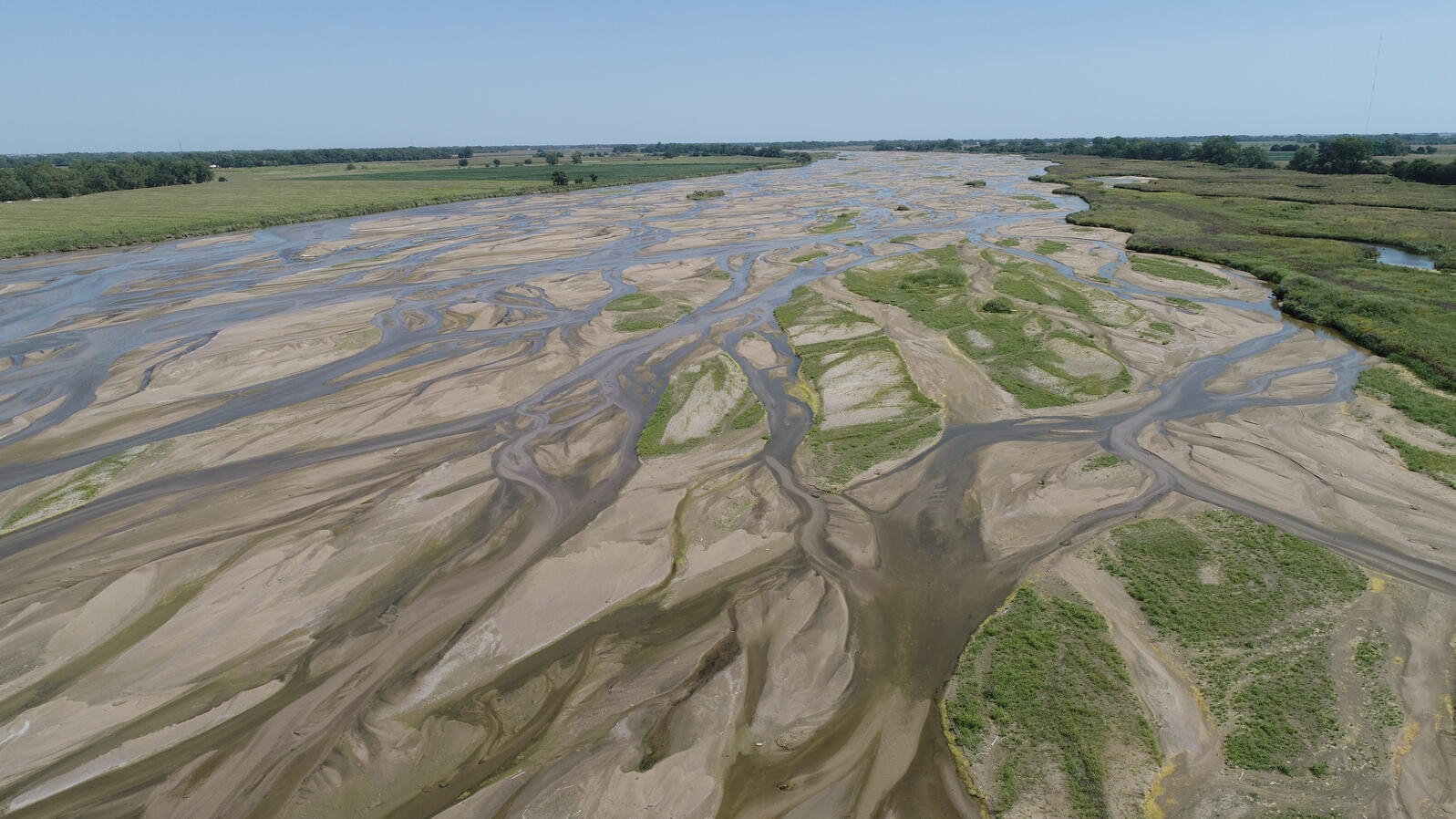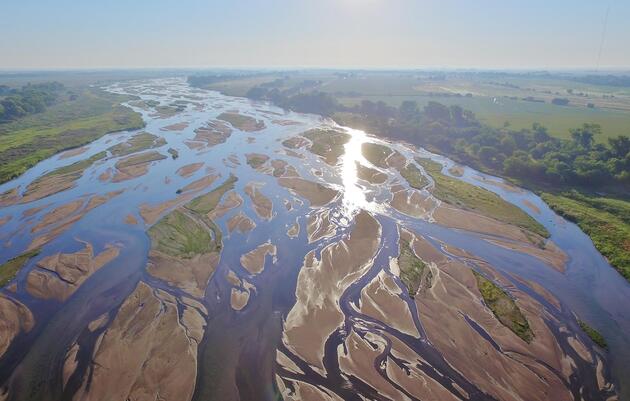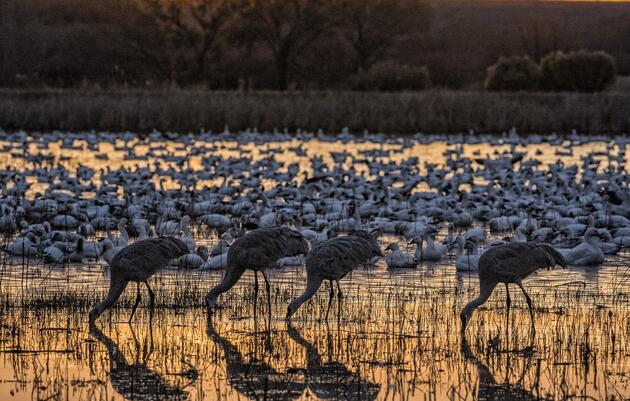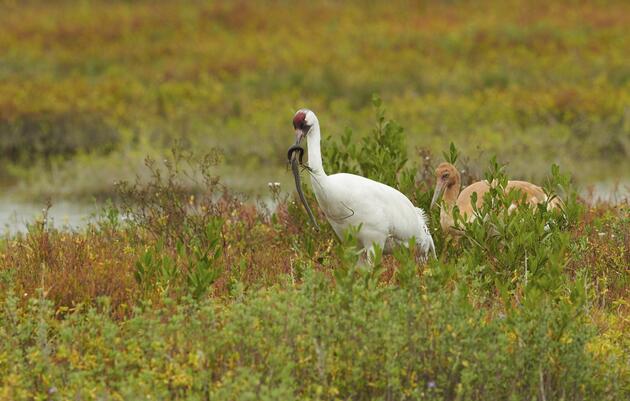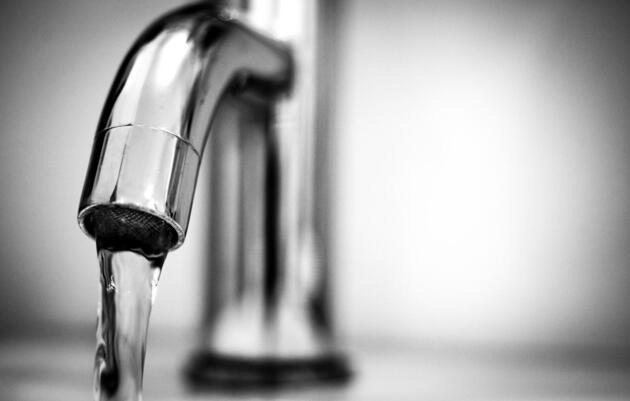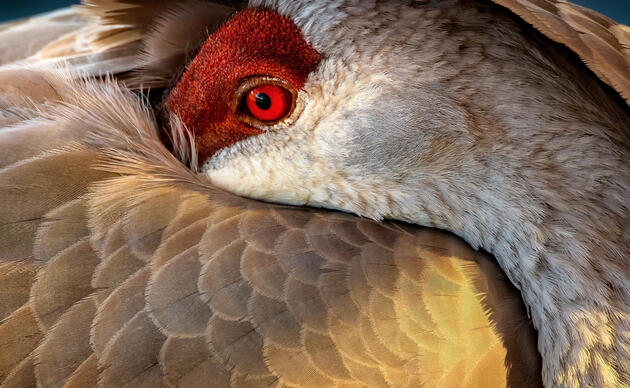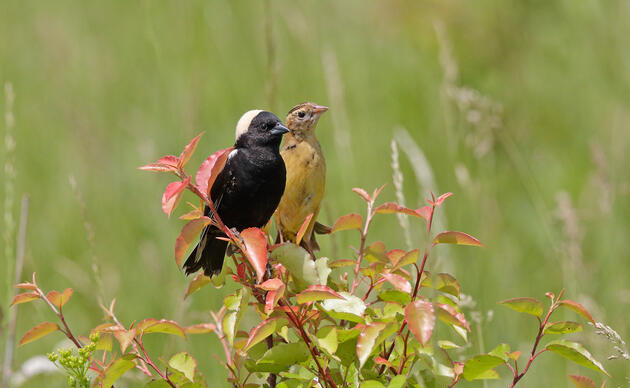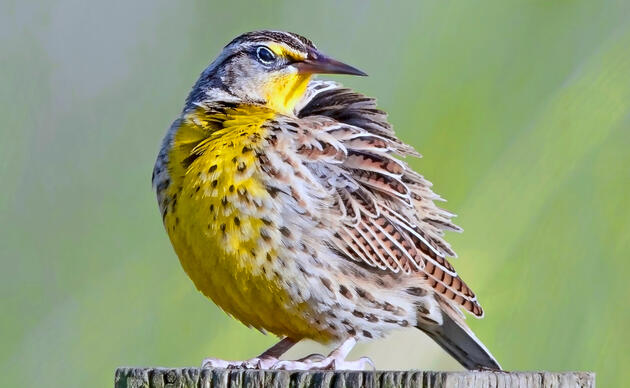Water operates as the support system for a host of complex ecological functions in the Platte River and researchers have been working for decades to tease-out exactly how streamflow impacts species living within and along it.
Before the construction of dams and diversions along its banks, the Platte River was characterized by high spring and early summer flows supplied by melting Rocky Mountain snow. These intense flows were a dominant force on the plains, creating the braided structure of the Platte River through erosion and conveyance of sediment, inhibiting the growth of vegetation that would otherwise obstruct the wandering sandbars, and replenishing nutrients as the water flowed from and through one portion of the watershed to another.
The Platte River habitat that provides for important bird species is dependent on variability in streamflow, including recurrent high streamflows that move sediment downstream and clear vegetation from sandbars. The loss of streamflow events that fluctuate throughout the year means that these birds would not be able to find suitable roosting or nesting sites that are protected from predators.
It is estimated that 70% of the historic Platte River streamflows are now gone before they get to the central Platte.
Without this water, the ability of the stream to broaden and shift sediment has been reduced and the Platte has become disconnected from its floodplain. Its channel has narrowed and deepened, and in turn, open channel habitat for migratory birds and other waterfowl has decreased dramatically – up to 90% in some locations.
Audubon Nebraska and a number of other conservation entities have spent millions of dollars to recreate and enhance in-channel habitat for migratory birds and other waterfowl along the central Platte River – doing through mechanical means what high, scouring streamflows of the past would have done on their own. These efforts are intense in terms of the use of time, staff, and equipment, and reducing what streamflow is available to help keep sediment moving down-river and sandbars clear of stabilizing vegetation will decrease the effectiveness and increase the costs of this habitat work.
The habitat within the river channel is important for the safety of birds when they sleep and nest, but the wetland habitat sitting along and near the river’s banks is vital as a source of protein for birds because this is where they can find insects, amphibians, and reptiles to feed upon. In these areas there is a direct connection between the water flowing down the river and the aquifers that store some of that water, so sufficient streamflow is needed in order to keep the groundwater tables high enough to support the function and productivity of wetlands.
According to the application for the interbasin transfer, water could be taken out of the Platte at any time of the year.
The potential ecological harm that the interbasin transfer could pose is not limited to the watershed from which the water will be removed, but also the watershed to which it will be sent.
In 2018, then-governor of Kansas, Jeff Colyer, wrote a letter to the State of Nebraska opposing the proposed transfer citing the threat of invasive species.
Although Kansas would be receiving more water from Nebraska via the transfer, there is genuine concern about the ecological and economic harm that the introduction of invasive white perch or silver carp could cause to communities along the Republican River. Once non-native fish enter the Republican River and its tributaries or reservoirs along the system, the safety and value of fishing and recreation in that body of water is greatly reduced.
Overall, experience has shown that the best way to manage invasive species is to prevent them from entering a system in the first place. Unfortunately, the costs to battle these invasive plant and fish species introduced into the Republican River Basin will fall upon taxpayers, landowners, anglers, and the communities that benefit from recreation along its waterways.
More about the proposed transfer
How you can help, right now
Support Rowe Sanctuary
Help us continue our important work for Sandhill Cranes and other birds that rely on the Platte River ecosystem!
Support Spring Creek Prairie
We are able to provide and protect this amazing landscape only with the help of private donations. Help us keep the trails open and the prairie thriving!
Support Audubon in the Great Plains
Support our work with local landowners, urban woods and prairies, and education programs in Nebraska and the Dakotas!

